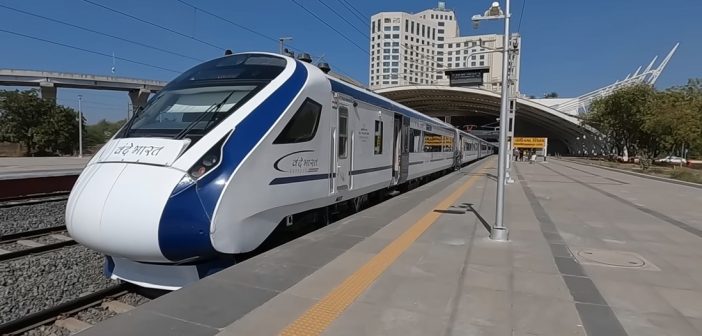India’s vast railway network, spanning over 68,000 kilometers, is a testament to the nation’s engineering prowess and its dependence on efficient mass transportation. However, this expertise is no longer confined to domestic needs. With the development of the sleek Vande Bharat trains, India is setting its sights on a new frontier – exporting its homegrown trains to the world.
The Rise of the Vande Bharat
The Vande Bharat, meaning “Indian Country,” is India’s first indigenously-designed and manufactured semi-high-speed train. Boasting a top speed of 200 kilometers per hour, the train offers a significant leap forward in passenger comfort and travel time compared to conventional trains. Equipped with modern amenities like infotainment systems, automatic doors, and enhanced passenger safety features, the Vande Bharat represents a paradigm shift in Indian railway technology.
Export Ambitions: A Multi-Billion Dollar Opportunity
The Indian government has set a bold target – to become a major exporter of Vande Bharat trains by 2025-26. This ambitious goal is driven by several factors:
- Cost Advantage: The Vande Bharat trains are estimated to be significantly cheaper than comparable models from established global players. This price competitiveness could be a major selling point for cost-conscious governments in developing nations.
- Technological Advancement: The trains showcase India’s growing capabilities in the railway sector. Exporting them would not only generate revenue but also establish India as a leader in innovative train technology.
- Global Demand: The global demand for efficient and affordable railway solutions is on the rise. With increasing urbanization and a focus on sustainable transportation, many countries are looking to expand their railway infrastructure. India aims to capitalize on this demand by offering a compelling solution.
Potential Markets: Beyond Borders
While details of specific countries are still under discussion, several regions present promising opportunities for Indian train exports:
- Southeast Asia: The rapidly developing economies of Southeast Asia are heavily invested in infrastructure projects. Countries like Vietnam, Thailand, and Indonesia could be potential markets for Vande Bharat trains, considering their existing railway networks and growing demand for efficient transportation.
- South America: Similar to Southeast Asia, South American nations like Brazil and Argentina are making significant investments in railway infrastructure upgrades. The affordability and technological advancements of the Vande Bharat could be attractive propositions for these countries.
- Africa: The African continent presents a vast potential market for railway development. Several African nations are embarking on ambitious infrastructure projects, and India’s train technology could play a crucial role in connecting people and goods across the continent.
Challenges and Considerations
Despite the promising outlook, India’s train export ambitions face several hurdles:
- Competition: Established players like Siemens, Alstom, and CRRC dominate the global railway equipment market. India will need to prove the reliability, efficiency, and long-term viability of its trains to compete effectively.
- Customization: Foreign countries might require modifications to the Vande Bharat design to suit their specific track gauge, safety regulations, and passenger needs. India needs to be flexible and adaptable to cater to diverse needs.
- Financing: Securing financing for large-scale train projects in foreign countries can be challenging. India might need to develop attractive financing packages and collaborate with international financial institutions to facilitate exports.
The Road Ahead: A Locomotive for Growth
India’s foray into train exports represents a significant step forward for the nation’s manufacturing prowess and its aspirations to become a global leader in the railway sector. The success of this venture hinges on effectively addressing the challenges, strategically targeting potential markets, and continuously innovating to stay ahead of the curve. If India navigates these hurdles successfully, it could not only generate significant revenue but also establish itself as a major player in the global railway market, shaping the future of transportation across the world.





